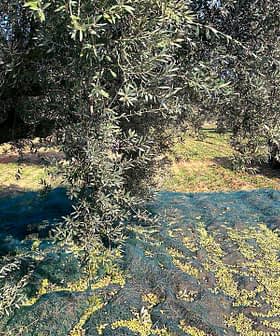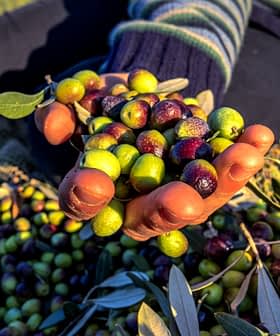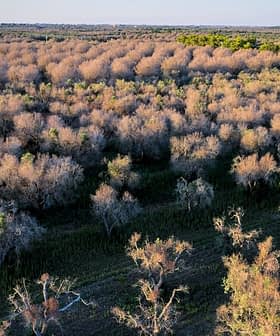Global Olive Oil Production Set for Second Straight Year of Decline
The world’s seven largest olive oil-producing countries are expected to yield 1.97 million tons in the 2023/24 crop year, 23 percent below the average of the previous four campaigns.
 Harvest in Jaén, Spain
Harvest in Jaén, Spain  6K reads
6K readsThe start of the harvest is underway across the Mediterranean basin, and preliminary production estimates are already being tallied.
According to interviews with farmers, millers, and local officials, the world’s seven largest olive oil-producing countries are forecasted to yield 1.97 million tons in the 2023/24 crop year, a seven percent decrease compared to last year and 23 percent below the average of the previous four crop years.
See Also:2023 Harvest UpdatesCombined, Spain, Italy, Tunisia, Greece, Turkey, Morocco and Portugal were responsible for 72 percent of global olive oil production last year. Over the past four crop years, that figure sits at 82 percent.
As a result, global olive oil production in the 2023/24 crop year will likely end up below the 2.94 million tons produced in 2022/23, the lowest yield since 2016/17.
According to Juan Vilar, a Spain-based strategic consultant for the olive oil sector, global production may fall to 2.4 million tons, an 18 percent decrease compared to 2022/23 and 24 percent below the average of the previous four crop years.
Sources: Olive Oil Times, International Olive Council
While producers in Spain, Italy, Tunisia, Morocco and Portugal anticipate superior harvests this year, the production increases are expected to be more modest than the significant declines predicted in Turkey and Greece.
Below is a summary of what producers and officials expect this crop year in the seven main producer countries.
Spain
After last year’s historically poor harvest, Spanish officials are optimistic that the 2023/24 crop year will improve. Production is expected to climb from 664,033 tons to 765,362 tons.
Despite the 15 percent increase compared to last year, production is still expected to remain 34 percent below the average of the previous four crop years. As a result, olive oil prices are expected to continue rising through May.
Some rain in the summer and autumn meant the world’s largest olive oil-producing country received some respite from its historic drought.
However, scorching springtime temperatures damaged some trees as they blossomed, resulting in a lower fruit set in Andalusia, the world’s largest olive oil-producing region.
Overall, production in Andalusia is expected to rise 7 percent compared to last year, reaching 550,600 tons. However, this remains 40 percent below the average of the previous four seasons.
Producers in the center of the country also reported damage from frosts in the early spring, which also lowered the potential fruit set. Nevertheless, farmers and millers in Castilla-La Mancha, Extremadura, the Community of Valencia, Catalonia and Aragón also expect superior harvests this year.
Italy
Farmers and officials in Italy expect production to exceed 290,000 tons in 2023/24, with some large producers predicting more than 300,000 tons.
If the low end of this estimate comes to fruition, it would represent a 23 percent increase compared to last year’s yield but remain 4 percent below the average of the previous four harvests.
Rising production is primarily due to the promising conditions in the country’s south, including the regions of Puglia, Calabria and Sicily, which are responsible for about 70 percent of Italy’s production.
In other highly significant regions for olive oil production, such as Tuscany, the harvest looks very challenging, with some notable exceptions.
“The olive growing season was good, and the quality seems good. We also expect a higher yield compared to other farms in the area,” Luca Perotti, general director of the central Tuscan producer, Azienda Pometti, told Olive Oil Times.
“These [positive] estimates are mainly due to the attention we place into regenerative agricultural practices, supported by technology and a significant experience on the field,” Perotti explained.
Tunisia
With a yield of 220,000 tons of olive oil expected in the 2023/24 crop year, Tunisian producers anticipate a significant rebound from the previous season’s 180,000 tons.
“This time, it rained at crucial times, which helped improve the situation,” Hédi Belkhodja, general manager of producer and exporter Bulla Regia, told Olive Oil Times.
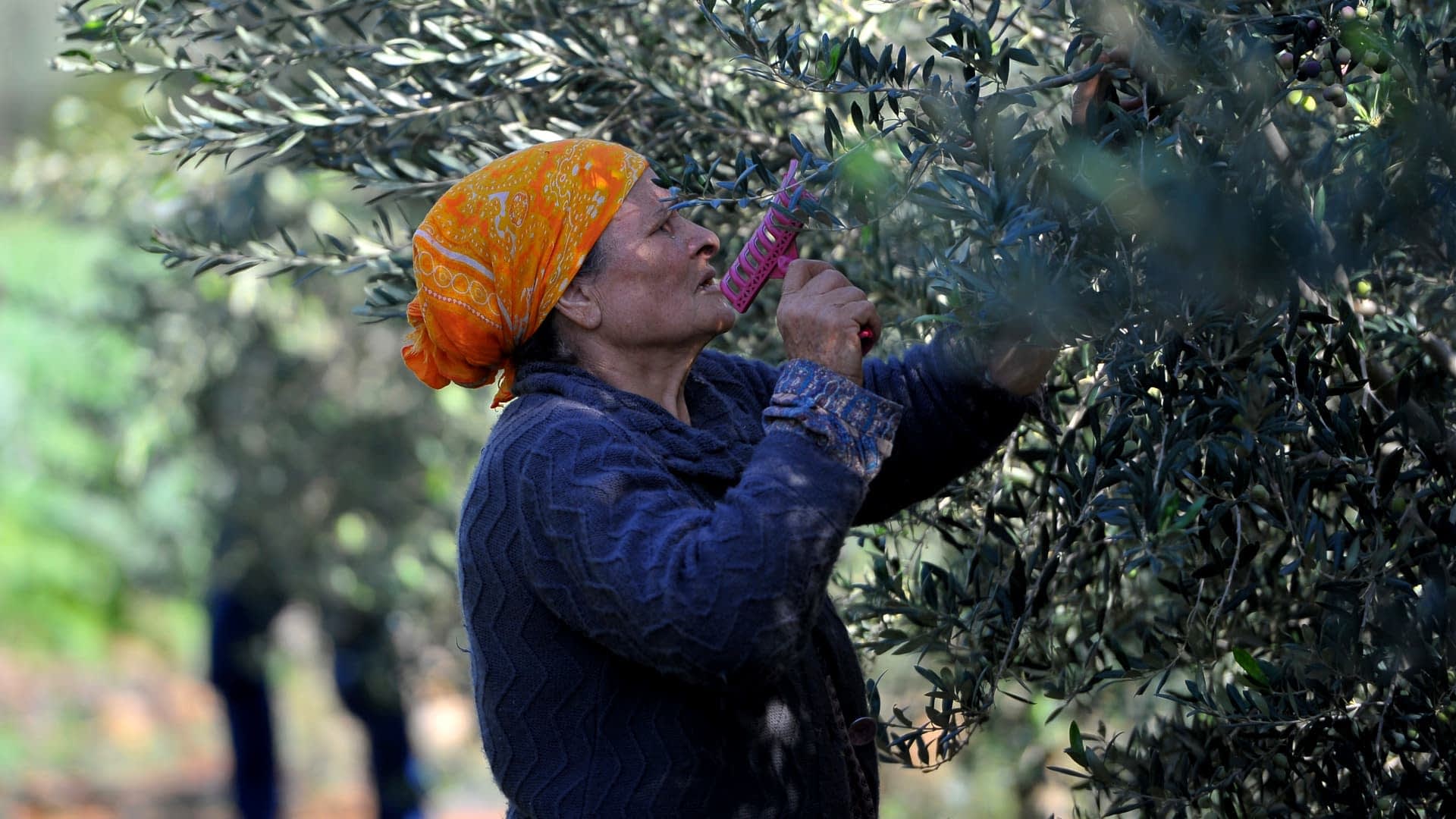
El-Battan, Tunisia (AP)
On the possibility of further rainfall in the crucial weeks before harvest, Belkhodja noted that “in the right conditions, it is possible that overall turnout could reach the 250,000 tons predicted by the United States Department of Agriculture. In normal conditions, it should be closer to 200,000 or 220,000 tons.”
Officials in several significant olive oil-producing regions, including Sfax and Gafsa, expect yields to rebound this year due to increased investment in the sector and better climatic conditions.
“This year, the harvest campaign was scheduled for a premature date due to the difficult climatic conditions experienced by Tunisia due to rain retention and high temperatures,” Taher Mbarki, regional commissar for agriculture and hydraulic resources, told local media.
Greece
After last year’s bumper yield of 330,000 tons, olive oil production in Greece is expected to decline significantly, with preliminary estimates of 200,000 tons.
Based on this forecast, Greek olive oil production is expected to fall nearly 40 percent compared to last year and would be 28 percent below the average of the previous four crop years.
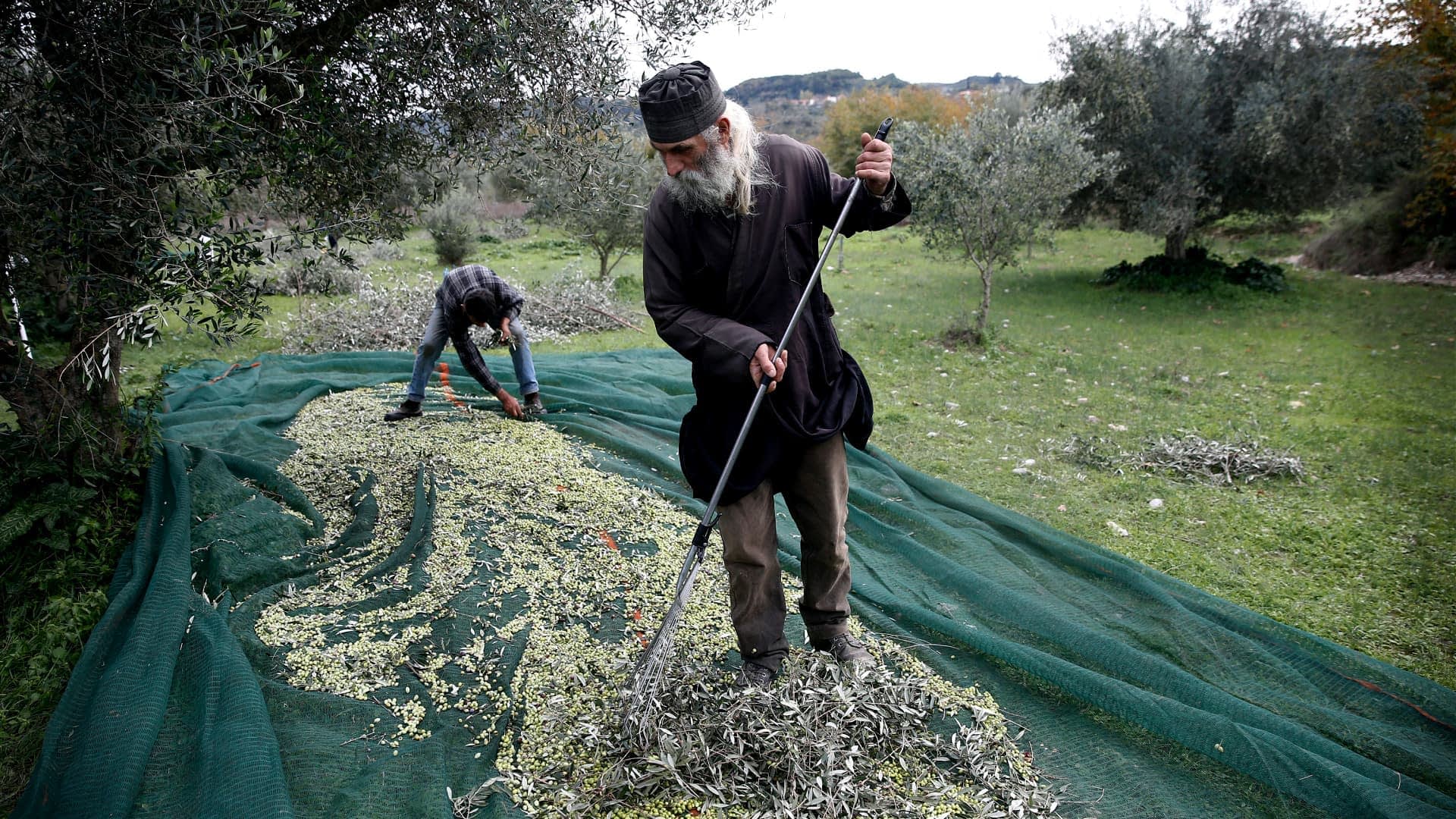
Kalo Pedi, Greece (AP)
Producers and officials in the country attributed the production decline to many groves entering an ‘off-year’ in the natural alternate bearing cycle of the olive tree combined with the extreme weather events in some parts of the country and the emergence of the olive fruit fly in others.
On Crete, responsible for roughly one-third of national production, officials anticipate one of the island’s worst harvests on record. A warm and wet summer created ideal conditions for the olive fruit fly to thrive, which caused unprecedented damage to groves across the island.
Meanwhile, other Greek islands and the northern regions of the peninsula experienced a very warm winter, which resulted in many trees receiving fewer chill hours than necessary to bear fruit the following spring.
Turkey
After a record-high yield of 421,000 tons last year, which made Turkey the world’s second-largest producer, this year’s harvest is expected to decline significantly.
Mustafa Tan, president of the National Olive and Olive Oil Council, told Olive Oil Times that production is expected to reach just 180,000 tons in the 2023/24 crop year, a 57 percent decrease compared to last year and 33 percent below the average of the previous four crop years.
A combination of many producers in the country entering an ‘off-year’ in the natural alternate bearing cycle of the olive tree and extreme weather events in some parts of the country were attributed to the production decrease.
Producers across western and southwestern Turkey said cold and rainy weather in the spring washed away pollen and damaged the blossoms of many trees, resulting in a lower fruit set. Additionally, hail in some parts of the country damaged trees during the blossoming period.
In eastern Turkey, last February’s deadly earthquake damaged olive trees and mills significantly, resulting in lower production.
Morocco
Officials and producers in Morocco expect olive oil production to increase by 10 percent compared to the 2022/23 harvest, reaching an estimated total of 171,600 tons.
If production forecasts come to fruition, this year’s harvest would exceed the average of the previous four crop years by 4 percent, making Morocco one of the few countries among the seven leading producers to experience an above-average yield.
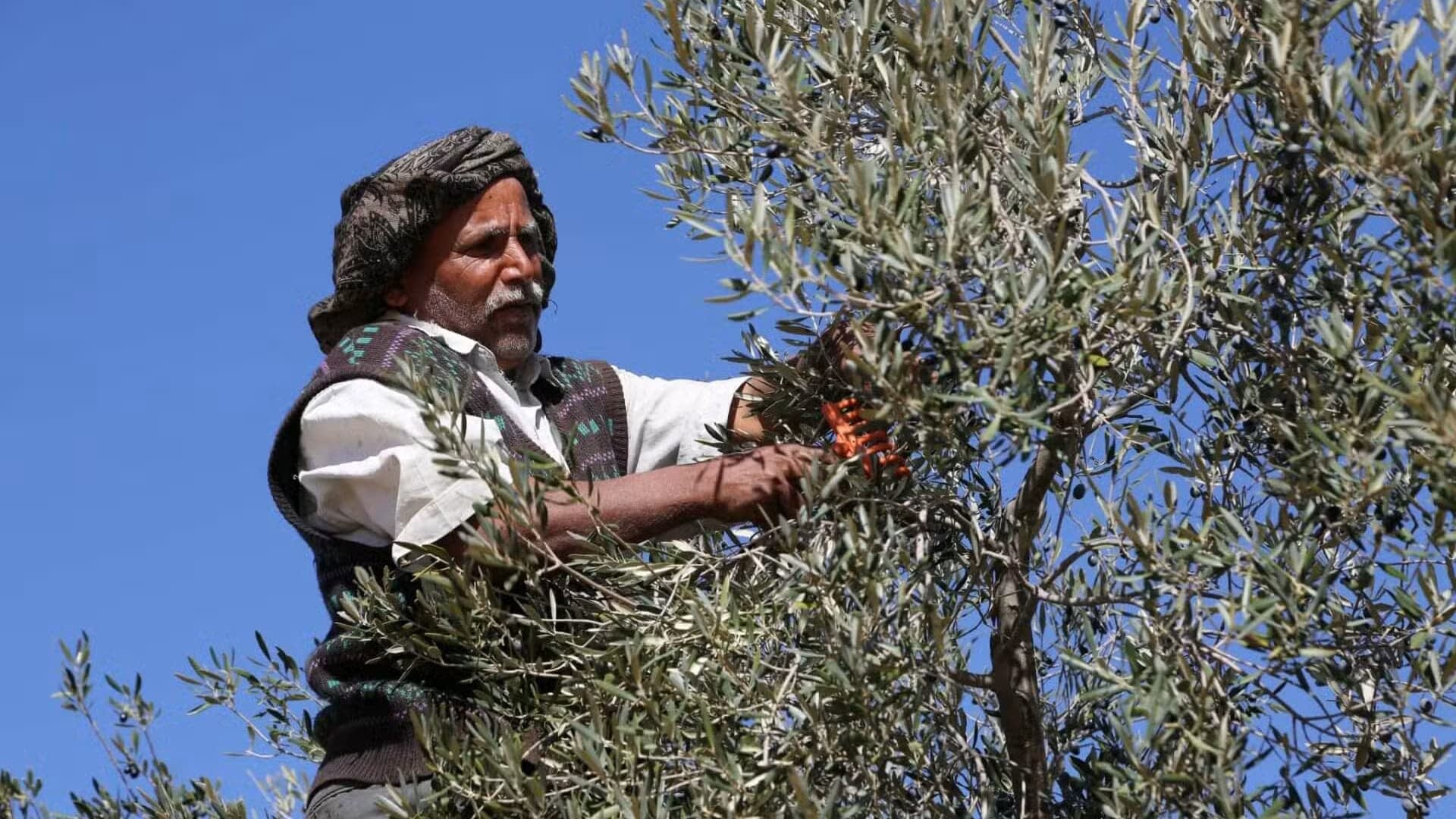
(Photo: CHO Group)
Rising olive oil production comes despite the country’s agriculture ministry predicting olive production to reach a similar level this year compared to the previous one.
“This can be attributed to a reduced production of table olives this year,” Adil Bajoub Adil, an agronomic engineer and coordinator of Morocco’s first olive oil-specific Master’s degree, told Olive Oil Times.
“The majority of producers are planning to process their olives due to the accelerated maturation process caused by the heatwave in August and September,” he added. “Additionally, the price of olive oil is very high this year, which is encouraging most producers to allocate their entire production exclusively for olive oil.”
According to some officials, olive oil production could have been even higher if not for the impacts of drought, extreme weather conditions and September’s earthquake damaging trees in different parts of the country.
Portugal
Officials and producers in Portugal estimate that production will continue its upward trend in the Iberian country, reaching about 145,000 tons.
If the forecast is borne out, production in Portugal would exceed last year’s total of 125,000 tons by 16 percent and the average of the previous four years by slightly more than 1 percent.
Producers attributed the production increase to many groves in the country entering an ‘on-year’ in the natural alternate bearing cycle of the olive tree, along with a wet winter and spring replenishing reservoirs and aquifers.
However, not every part of the country is expected to experience the benefits uniformly. The rise in production is primarily driven by the super-high-density groves of Alentejo, the hectarage of which increases yearly.
Meanwhile, production in the traditional olive groves in the north of the country experienced a production decline compared to the previous year.
Costas Vasilopoulos contributed to this report.


